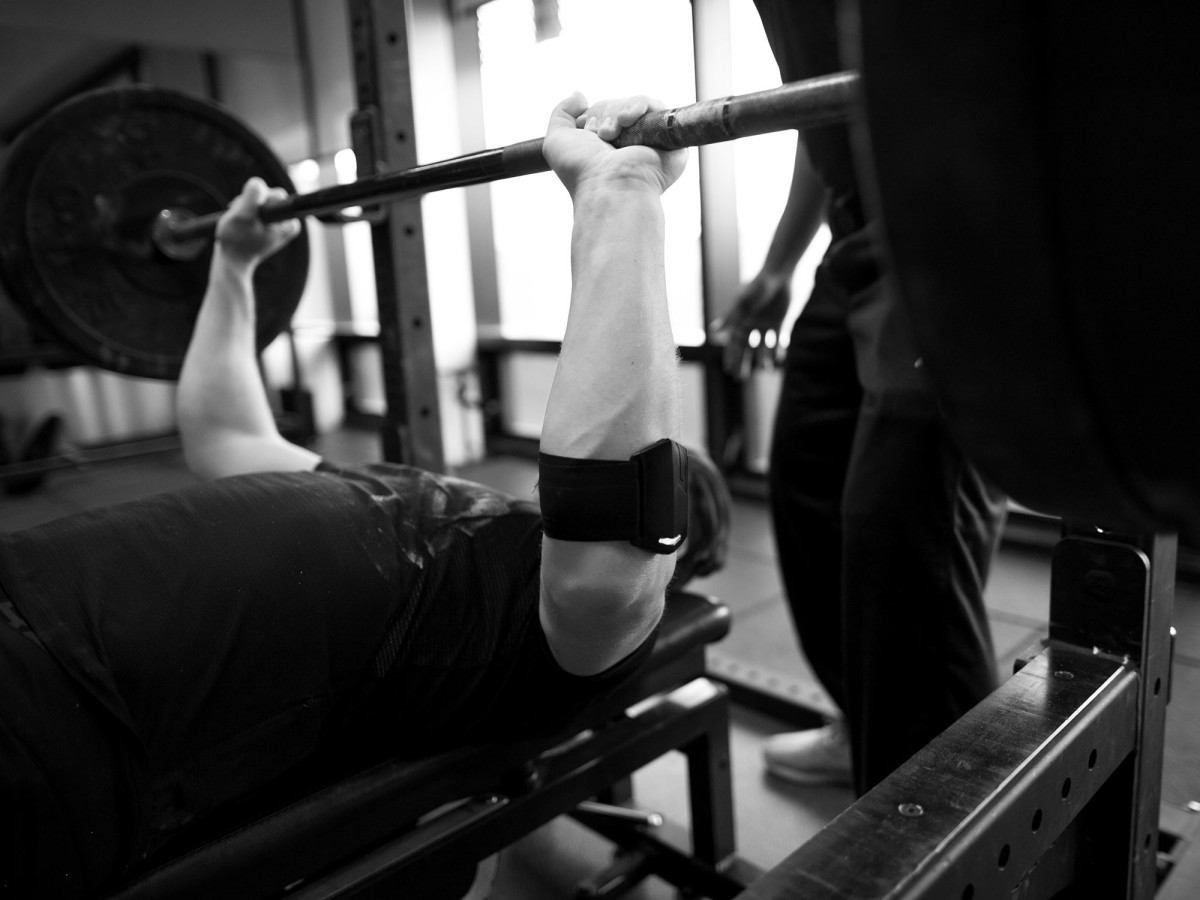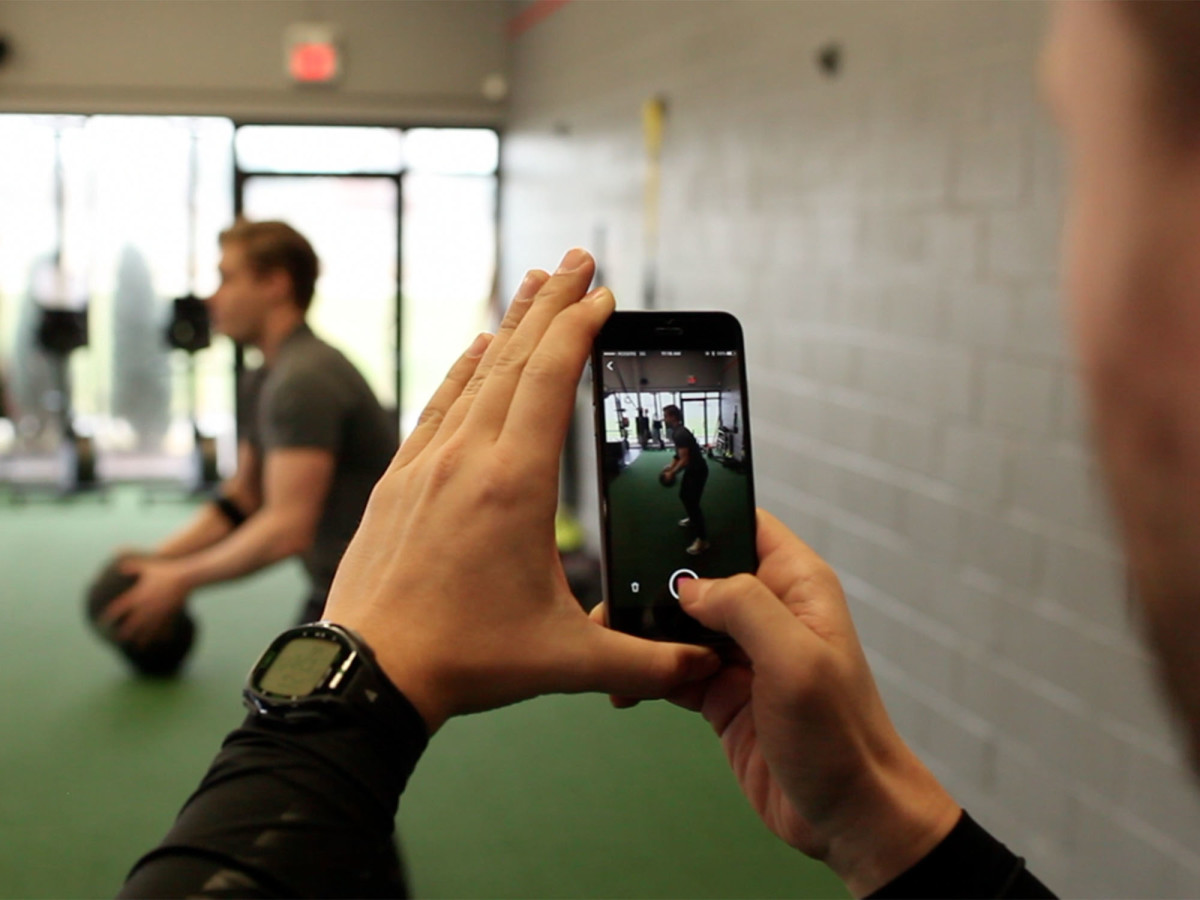Inside the wearable tech backed by the 49ers that could change the NFL weight room

Over the next few days, this year’s top 300 NFL prospects will be at the combine in Indianapolis, making their cases for why they should be given a shot at pro football. They’ll be prodded and tweaked in medical exams and functional movement screens, grilled in interviews and aptitude tests, then finally put through their paces in the Underwear Olympics’ signature seven drills: the 40-yard dash, bench press, vertical jump, broad jump, three-cone drill, and 20- and 60-yard shuttle runs.
Since the combine—formerly the National Invitational Camp—became a league-wide affair in 1985, not much has changed with its drills. So last fall, Sports Illustrated began asking how the event could be reimagined using modern technology. Here Edge takes a look at how wearable tech could be integrated.
The future of the NFL combine: How virtual reality and other new tech can change scouting
Of all the combine’s drills, the bench press is probably the least applicable to football. Dan Hatman, a former NFL scout, and the director of scouting development for The Scouting Academy, says that the only relevance of the bench press is to demonstrate a player’s work ethic in the weight room.
“If a guy’s putting in great numbers, he had to work at those,” Hatman says. “You don’t roll out of bed with those numbers.”

In the bench press, prospects try to complete as many reps as possible with a barbell with 225 pounds on it, without taking a break—the record, set in 1999 by defensive tackle Justin Ernest, is 51. But the average lineman weighs over 300 pounds, and if you were ever unlucky enough to be facing one down from across the line of scrimmage, you’d be tasked with pushing them away horizontally, not vertically. You’d also get around a 30-second break before having to do that all over again. Ernest’s record didn’t pay off in the league. He was picked up as an undrafted free agent by the Saints in ’99, but never played a single down of pro football.
“When you think about the game of football, it’s not a volume sport,” says Rami Alhamad, founder and CEO of PUSH, a company aiming to use technology to help athletes improve their performance. “There’s plenty of downtime. It’s a lot more about how explosive and how much power you can generate. It’s the stronger team that wins.”
Add some intelligence to your workout with these NFL Combine-inspired wearables
PUSH works closely with the 49ers, who have invested in the company, and has built athlete management systems and a wearable called the PUSH Band. Worn on an athlete’s forearm, that device uses accelerometers and gyroscopes to record movement.
“The PUSH Band can measure velocity and power,” says Chris Chapman, the company’s director of sport science. “So we can measure how fast those reps are being done, and how much they’re producing.” Before joining PUSH, Chapman worked as the lead strength and conditioning coach at the Canadian Sport Institute Ontario, where he trained national and Olympic athletes.

“Sport happens quickly, and speed matters,” Chapman says. “The athlete that can move the weight the fastest can push their opponents faster, gain an advantage, and therefore potentially win the battle.”
Alhamad studied mechatronics (a combo of mechanics and engineering) and computing—and played rugby—before founding PUSH. For the last few years he has attended the combine to try to understand both the need and the demand for integrating more technology into football. He suspects that significant changes to the combine’s drills are unlikely within the near future, so instead, he says, “let’s try to garner more information out of [existing] tests that might be more predictive of someone’s performance.”
But one of the biggest problems of evaluating linemen with existing devices, according to Chapman, is that those only measure how a single point moves in space. In reality, he says, “[linemen] don’t really move too far from the line.” GPS devices like Catapult, RFID tracking tags like Zebra, and inertial measurement units such as PUSH effectively treat a player like a single dot in space. When that dot doesn’t move much, the movement data implies the player didn’t get a workout—pushing out bench press reps might look just the same as lying down. The PUSH Band extracts some extra detail in the bench press because it measures the movement of an arm rather than the athlete’s core, but that comes with the tradeoff of losing data about the core.
The performance enhancer for your brain: How elite athletes are using EEG to get a mental edge
The solution could be integrating tiny inertial measurement units within clothing. That would provide information on how an athlete’s legs and arms move in relation to their body, capturing similar biomechanics metrics on the field to those that otherwise might come from a motion capture lab. Looking in detail at movement could help teams evaluate the injury risk of prospects, and find ways to correct poor biomechanics.
According to Alhamad, PUSH’s next product will miniaturize the technology used in the Band, and embed it directly into compression clothing, spreading about 10 sensors out around a player’s body. PUSH has an early prototype of that project running at home in Canada, and hopes to beta test the technology this summer with the 49ers. Which means that even if the Underwear Olympics’ drills aren’t set to get smarter anytime soon, at least maybe the underwear might.
